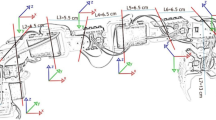Abstract
This work proposes a FPGA-based architecture for accelerating the Continuous GRASP (C-GRASP), a prominent metaheuristic for solving continuous optimization problems. Although FPGA implementations have been proposed for other metaheuristics, nothing has been done for C-GRASP. We conduct a comprehensive set of experiments on well-known hard test problems, and compare our FPGA architecture with C-GRASP implementations running on four other architectures: a single-core ARM Cortex A9-based, a single-core Intel i7-based, a multi-core Intel i7-based, and a GPU-based. Experimental results demonstrate that the proposed architecture outperforms the others in terms of performance-to-power-efficiency. For instance, it is on average 3x faster and 15x less power consuming than the single-core Intel i7-based implementation. Moreover, we introduce a model-based method that helps designers with little experience in FPGA development to use our high-performance architecture to optimize their problem. Our solution is a very interesting option for the emerging technology of FPGA-based data centers (e.g, Microsoft’s Catapult project), and also for resource-constrained embedded systems (e.g., drones).




Similar content being viewed by others
Explore related subjects
Discover the latest articles, news and stories from top researchers in related subjects.References
Resende MG, Ribeiro CC (2016) Optimization by GRASP. Springer, New York
Talbi E-G (2009) Metaheuristics: from design to implementation, vol 74. Wiley, Hoboken
Hirsch MJ, Pardalos PM, Resende MG (2010) Speeding up continuous grasp. Eur J Oper Res 205(3):507–521
Hirsch MJ, Meneses C, Pardalos PM, Resende MG (2007) Global optimization by continuous grasp. Optim Lett 1(2):201–212
Hirsch MJ, Pardalos PM, Resende MG (2006) Sensor registration in a sensor network by continuous grasp. In: Military communications conference, 2006. MILCOM 2006, IEEE, pp 1–6
Hirsch MJ, Pardalos PM, Resende MG (2009) Solving systems of nonlinear equations with continuous grasp. Nonlinear Anal Real World Appl 10(4):2000–2006
Hirsch MJ, Meneses CN, Pardalos PM, Ragle M, Resende MG (2007) A continuous grasp to determine the relationship between drugs and adverse reactions. In: AIP conference proceedings, vol 953, AIP, pp 106–121
Macharet DG, Neto AA, da Camara Neto VF, Campos MF (2011) Nonholonomic path planning optimization for dubins’ vehicles. In: IEEE international conference on robotics and automation (ICRA), 2011, IEEE, pp 4208–4213
Neto JXV, Reynoso-Meza G, Ruppel TH, Mariani VC, dos Santos Coelho L (2017) Solving non-smooth economic dispatch by a new combination of continuous grasp algorithm and differential evolution. Int J Electric Power Energy Syst 84:13–24
Queiroga E, Subramanian A, Lucídio dos Anjos FC (2018) Continuous greedy randomized adaptive search procedure for data clustering. Appl Soft Comput 72:43–55
Garey MR, Johnson DS (2002) Computers and intractability, vol 29, wh freeman New York
Aiex RM, Binato S, Resende MG (2003) Parallel grasp with path-relinking for job shop scheduling. Parallel Comput 29(4):393–430
Gulati K, Khatri SP (2010) Accelerating boolean satisfiability on a custom ic. In: Hardware acceleration of EDA algorithms. Springer, pp 33–61
Scott SD, Samal A, Seth S (1995) Hga: a hardware-based genetic algorithm. In: Proceedings of the 1995 ACM third international symposium on Field-programmable gate arrays. ACM, pp 53–59
Wakabayashi S, Kimura Y, Nagayama S (2006) Fpga implementation of tabu search for the quadratic assignment problem. In: 2006 IEEE international conference on field programmable technology, IEEE, pp 269–272
Arboleda DMM, Llanos CH, Ayala-Rincón M et al (2009) Hardware architecture for particle swarm optimization using floating-point arithmetic. In: 2009 ninth international conference on intelligent systems design and applications, IEEE, pp 243–248
Nogueira B, Pinheiro RG (2018) A cpu-gpu local search heuristic for the maximum weight clique problem on massive graphs. Comput Oper Res 90:232–248
Nogueira B, Pinheiro RG (2019) A gpu based local search algorithm for the unweighted and weighted maximum s-plex problems. Ann Oper Res. 284, 367–400
Nogueira B, Tavares E, Araujo J, Callou G (2019) Accelerating continuous grasp with a gpu. J Supercomput. 79, 5741–5759
Sundararajan P (2010) High performance computing using fpgas, Xilinx white paper: FPGAs, 1–15
Altera, Cyclone v soc fpga (2019). https://www.intel.com/content/www/us/en/products/programmable/soc/cyclone-v.html
Nogueira B (2019) Fpga c-grasp source files. https://sites.google.com/site/nogueirabruno/software
Nogueira B, Andrade E, Tavares E (2019) Power-aware scheduling of real-time applications onto mpsoc platforms with multi-bank shared memory. Microprocess Microsyst. 67, 93–102
Nogueira B, Maciel P, Tavares E, Silva RM, Andrade E (2017) Multi-objective optimization of multimedia embedded systems using genetic algorithms and stochastic simulation. Soft Comput 21(14):4141–4158
de Araújo TMU, Andrade LMM, Magno C, Cabral LDAF, do Nascimento RQ, Meneses CN (2016) Dc-grasp: directing the search on continuous-grasp. J Heuristics 22(4):365–382
Martin B, Gandibleux X, Granvilliers L (2007) Continuous-grasp revisited.In: Heuristics: Theory and applications. Nova Science Publishers, Inc, Ch. 1, pp 1–31
Altera, Dsp builder (2019). https://www.intel.com/content/www/us/en/software/programmable/quartus-prime/dsp-builder.html
Jamil M, Yang X-S (2013) A literature survey of benchmark functions for global optimisation problems. IntJ Math Model Numer Optim 4(2):150–194
Author information
Authors and Affiliations
Corresponding author
Additional information
Publisher's Note
Springer Nature remains neutral with regard to jurisdictional claims in published maps and institutional affiliations.
Rights and permissions
About this article
Cite this article
Nogueira, B., Barboza, E. A FPGA-based accelerated architecture for the Continuous GRASP. Computing 103, 1333–1352 (2021). https://doi.org/10.1007/s00607-020-00850-5
Received:
Accepted:
Published:
Issue Date:
DOI: https://doi.org/10.1007/s00607-020-00850-5



